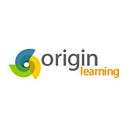Developing and Deploying Effective Product Knowledge Training
In the last blog, we discussed the importance of product knowledge to drive business goals. In this blog, we will explore how to develop effective product knowledge training and deployment.
Let us first examine the goals of product knowledge training.
Table of Contents
- The fundamentals
- Understanding Customer Benefit
- Analysing the competition
- Recognizing Alternatives
- Soft Skills Training
- Online access over a Learning Management System (LMS)
- Role Plays
- Ongoing and refresher training
The fundamentals
The crux of the training must cover the raison d’etre of the product. What does the product do? What are its features? How does it work? This must include the following objectives:
- Define product purpose, use, working, price
- Describe key features of the product
- Discuss product strengths and weaknesses
- Understand the product’s Unique Selling Proposition
- Install and configure product
- Solve product problems
- Integration with other products
- Explain service support details
Leading to the most vital lesson –
Understanding Customer Benefit
How does the product help the target audience to solve a problem/enhance performance/streamline work and so on and so forth. In other words, how does the product facilitate a deeply positive experience? How does it tackle current challenges and either help surmount them or show another way? This section must comprise the following objectives:
- Understanding Customer Benefit
- Identify inherent product appeal to customers
- Demonstrate product benefits within the customer’s context
- Tackle customer concerns/objections
- Support customization requests
- “Why should I buy this?”
Analyzing the competition
“Why should I buy your product, when X is offering me a similar one at a better deal?” is a query often thrown at the sales force and the front-line staff. It stands to reason that any representative in direct contact with the customer must be conversant with the competition, their products, features, benefits, cost and industry reputation. The following objectives must be covered in this module:
- Identify competitors’ products
- Analyse features, benefits, strengths, weaknesses and price of competitors’ products
- Evaluate competitors’ products with own products
- Demonstrate the benefits of the winning features and benefits for positive client engagement
- Identify own product’s weaknesses if any
- Position the vulnerabilities, if any such that they do not take away from the performance of the whole/are negligible
ALSO READ : Immersive Training to Drive User Adoption and Deepen Product Engagement
Recognizing Alternatives
Not every product is unique. Most are premised on the principles and features of existing products, and as such these continue to exist. These are not necessarily competition, but traditional products, used over time to become entrenched in the collective psyche.
Take for instance Excel sheets — a million things can be done with them, so that they are equally valuable to Accounts, Finance, Sales, Human Resources, Project Management and Training to name a few functions who use them regularly. But, each of these functions now have an array of software products which incorporate the best of Excel’s features in an enhanced and user-friendly interface which is timesaving and boosts productivity.
So, when the customer reverts to these conventional options, the product representative must be able to guide the client with effective answers and compelling solutions. This section of the training must fulfil the following objectives:
- Identify traditional products which help solve part of the customer’s needs
- Understand the use and limitations of traditional products
- Demonstrate own product’s enhanced capabilities and features
- Discuss the benefits of own product that help solve the client’s requirements/challenges
Soft Skills Training
Effective communication is of paramount importance. Training should impart the following:
Now that we have got all the elements of effective product knowledge training covered, it’s time to hit the road and actually, run the training programme.
Let’s now examine the most effective deployment of this thoughtfully put together course on product training for the company’s representatives.
To Know more on other goals like-
Online access over a Learning Management System (LMS)
Role Plays
Ongoing and refresher training
